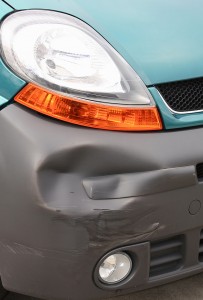 According to a December 2009 report from the National Association of Insurance Commissioners (NAIC), the average cost of automobile insurance declined by 2.6 percent in 2007. The District of Columbia had the highest average expenditure ($1,140), followed by New Jersey ($1,104), Louisiana ($1,096), New York ($1,047) and Florida ($1,043).
According to a December 2009 report from the National Association of Insurance Commissioners (NAIC), the average cost of automobile insurance declined by 2.6 percent in 2007. The District of Columbia had the highest average expenditure ($1,140), followed by New Jersey ($1,104), Louisiana ($1,096), New York ($1,047) and Florida ($1,043).
Based on 2007 NAIC data, seventy six (76) percent of insured drivers purchase comprehensive coverage in addition to liability insurance, and seventy-two (72) percent buy collision coverage.
In 2007, based on average automobile insurance expenditures of NAIC, D.C. ranked number one as the state that has most expensive automobile insurance with the average expenditure $ 1, 140 while North Dakota is the state that has least expensive insurance with the average expenditure $512.
The average expenditure measures what consumers actually spend for insurance on each vehicle. It does not equal the sum of liability, collision and comprehensive expenditures because not all policyholders purchase all three coverages. To calculate average expenditures the National Association of Insurance Commissioners assumes that all insured vehicles carry liability coverage but not necessarily collision or comprehensive coverage.
However, there are factors that affect expenditures like the coverages purchased. In states where the economy is healthy, people are more likely to purchase new cars. Since new car owners are more likely to purchase physical damage coverages, these states will have a higher average expenditure.
Moreover, because of the higher density of traffic, increased likelihood of theft and vandalism, and greater incidence of fraud in some cities, auto insurance in urban areas tends to be more expensive.
Also, to guarantee that auto insurance is available to those who cannot obtain it in the private market, all states use special systems. In part because of the evolution of the nonstandard sector of the voluntary market, the percentage of vehicles insured in the shared market is dropping.
The Bureau of Labor Statistic’s consumer price index (CPI) tracks changes in the prices paid by consumers for a representative “basket” of goods and services. The index shows that the cost of living fell from 2008 to 2009. However the cost of auto insurance and related items, such as healthcare and legal services increased. But it is worth for the reasons of owning auto insurance is so important; auto insurance may be legally required by the state, and it can financially protect a driver, their passengers, and their automobile. In short, auto insurances legally and financially protect drivers and car owners.


